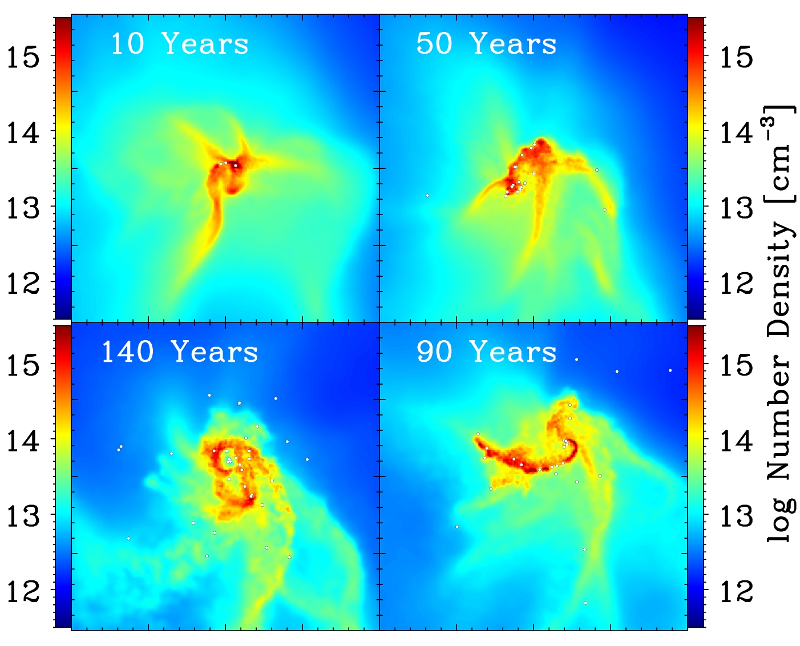
|
EPoS |
|
EPoS Contribution
|
|
Fragmentation of star-forming clouds at very low metallicities
Gustavo Dopcke University of Heidelberg, Heidelberg, Germany | |
| The theory for the formation of the first population of stars (Pop III) predicts a initial mass function (IMF) dominated by high-mass stars, in contrast to the present-day IMF, which tends to yield mostly stars with masses less than 1 M_Solar. The leading theory for the transition in the characteristic stellar mass predicts that the cause is the extra cooling provided by increasing metallicity. In particular, dust emission can can overtake H_2 as the leading cooling process at very high densities. The aim of this work is to determine the influence of dust cooling on the fragmentation of very low metallicity gas. To investigate this, we make use of high-resolution hydrodynamic simulations with sink particle formation, to follow the collapse and further fragmentation of star-forming clouds. We follow the thermodynamic evolution of the gas by solving the full thermal energy equation, and also track the evolution of the dust temperature and the chemical evolution of the gas. We model four clouds with different metallicities (10^{-4}, 10^{-5}, 10^{-6} Z_Solar, and 0 ), and determine the properties of the cloud at the point at which it undergoes gravitational fragmentation. We find evidence for fragmentation in all four cases, and hence conclude that there is no critical metallicity below which fragmentation is impossible. Nevertheless, there is a clear change in the behavior of the clouds below Z 10^{-4} Z_Solar, caused by the fact that at this metallicity, dust grains overtake H2 as the main coolant of the fragmenting gas. | |
 | |
| Caption: Number density map of a slice in the densest clump and the sink formation time evolution. | |
| Collaborators: S. C. O. Glover, U. Heidelberg, Germany P. C. Clark, U. Heidelberg, Germany R. S. Klessen, U. Heidelberg, Germany |
Key publication
|